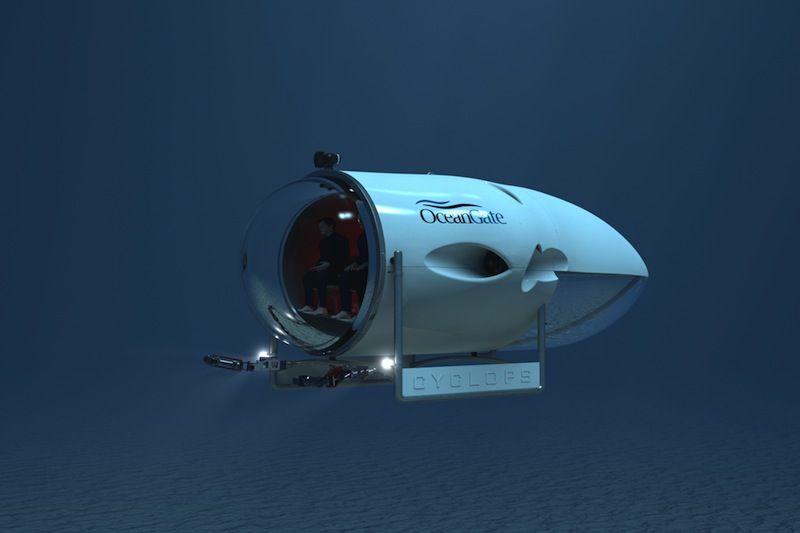'Cyclops' Sub Aims to Advance Deep Sea Exploration

A manned submersible named Cyclops is being built to dive nearly 2 miles (3 kilometers) below the ocean's surface, deeper than most existing subs, and could open up more of the seafloor to exploration.
The bullet-shaped, carbon-fiber vehicle could ferry passengers to depths of about 9,842 feet (3,000 meters), its Seattle-area developers say. Cyclops is slated to make its commercial debut in 2016 and a video animation shows what a typical journey on the submarine might look like.
There are a handful vehicles that can travel to even darker parts of the ocean. Alvin, the United States' deepest-diving manned sub, can reach a maximum depth of 14,760 feet (4,500 m), and after an ongoing makeover, it will eventually be able to explore 21,325 feet (6,500 m) down.
Then of course there's James Cameron's submarine, Deepsea Challenger, which took seven years and some $8 million to build. In that vehicle, the filmmaker successfully completed the deepest solo dive by descending to the bottom of the Pacific's Mariana Trench, nearly 7 miles (11 km) below the ocean's surface, in March 2012. Cameron recently donated the vehicle to the Woods Hole Oceanographic Institute in Massachusetts. [Images: Cameron's Dive to Earth's Deepest Spot]
But developers working on the Cyclops project say deep-diving subs are not widely available for commerical and research ventures.
"Most people don't appreciate there are not very many private or commercial subs," Stockton Rush, CEO of the submarine-chartering company OceanGate, said in a statement. Rush added that there are about 600 military subs worldwide and only about 100 certified civilian subs.
OceanGate, which is based in Everett, Wash., has given researchers at the nearby University of Washington a $5 million grant to develop Cyclops, and the team recently unveiled their design for the submarine.
Sign up for the Live Science daily newsletter now
Get the world’s most fascinating discoveries delivered straight to your inbox.
Cyclops takes its name from the one-eyed giant of Greek mythology because it will have a 5-foot-wide (1.5 meters) dome of thick glass in its front viewing area to give passengers a 180-degree of the ocean, according to OceanGate.
The vehicle will have a 7-inch-thick (17 cm) carbon-fiber hull and a lithium-polymer battery that could operate for up to eight hours at full power, but Cyclops also could provide up to 96 hours of life support, its developers say.
OceanGate officials say they hope to make Cyclops available for a wide range of customers, including the oil and gas industry, deep-sea mining companies, pharmaceutical exploration ventures, academic researchers and even tourists.
"To make a submersible economically viable you need to be able to serve multiple users so you have the volume to keep costs low," Rush said in a statement. "The key today for big projects is you’ve got to have multiple revenue streams."
OceanGate currently owns and charters other manned submersibles, including the five-person Antipodes, which can travel up to 1,000 feet (305 m) deep. Researchers recently used that sub for a study off Fort Lauderdale, Fla., and discovered that lionfish, a wildly invasive species, have colonized even deeper parts of the ocean than scientists had expected.
Follow Megan Gannon on Twitter and Google+. Follow us @livescience, Facebook & Google+. Original article on LiveScience.












